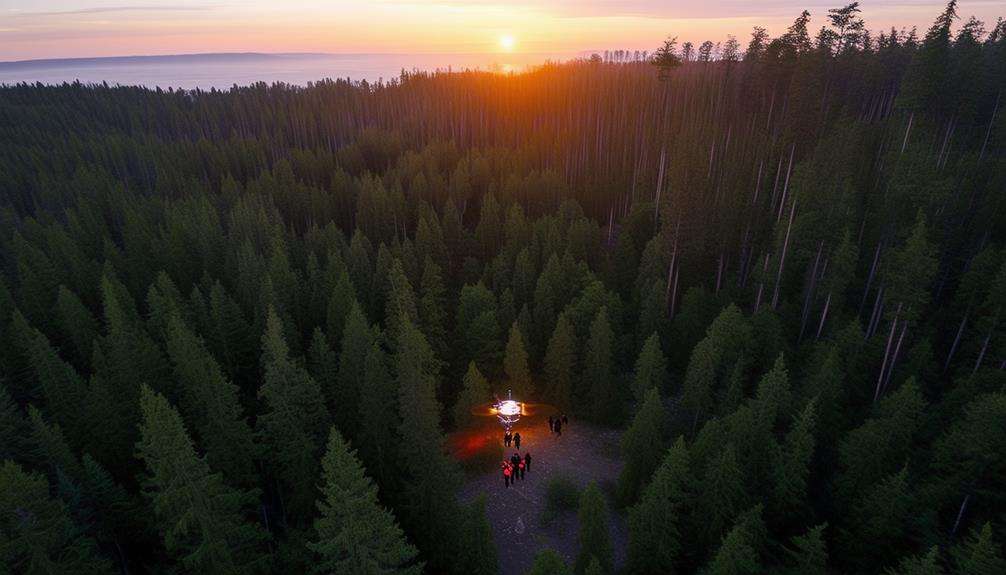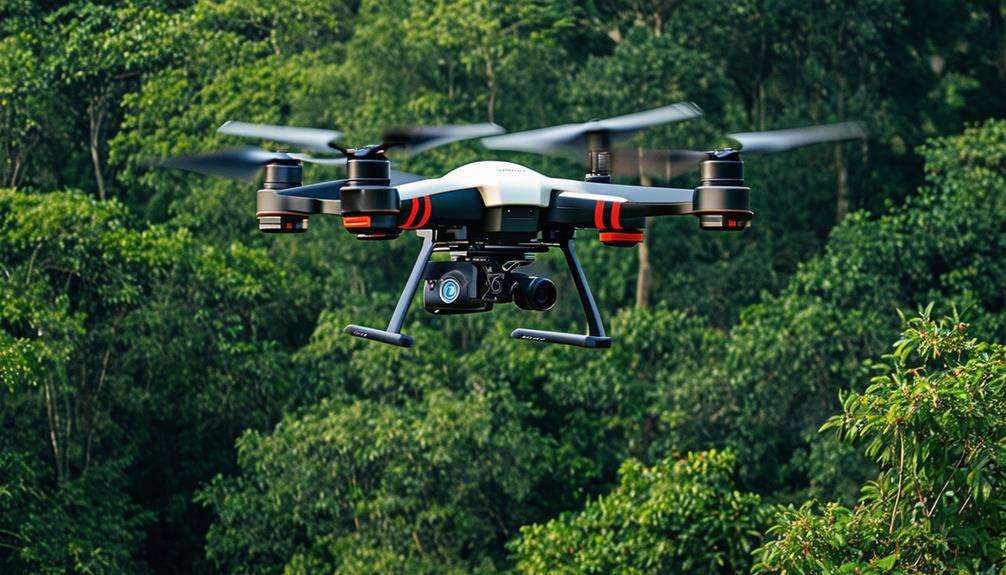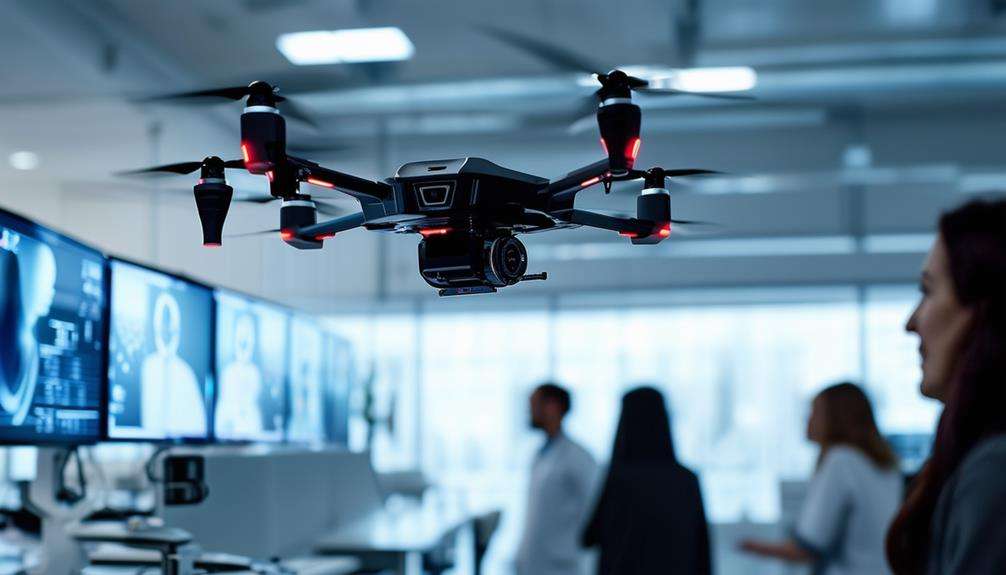The Environmental Benefits of Using Drones
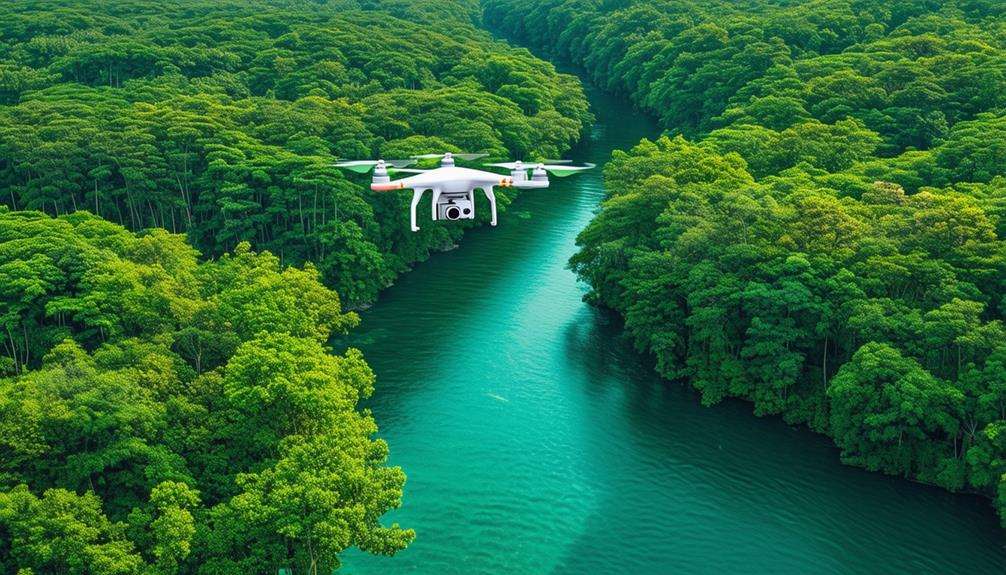
Drones are becoming essential tools in environmental conservation. They monitor forest health, detect fires early, and track illegal activities like poaching and deforestation. Drones gather crucial data on wildlife and ecosystems without causing disruption.
They also inspect renewable energy sources, ensuring efficient operations with minimal environmental impact. Drones can access hard-to-reach areas, offering detailed views of the natural world. This technology holds significant potential for protecting biodiversity and natural resources.
Forest Health Monitoring
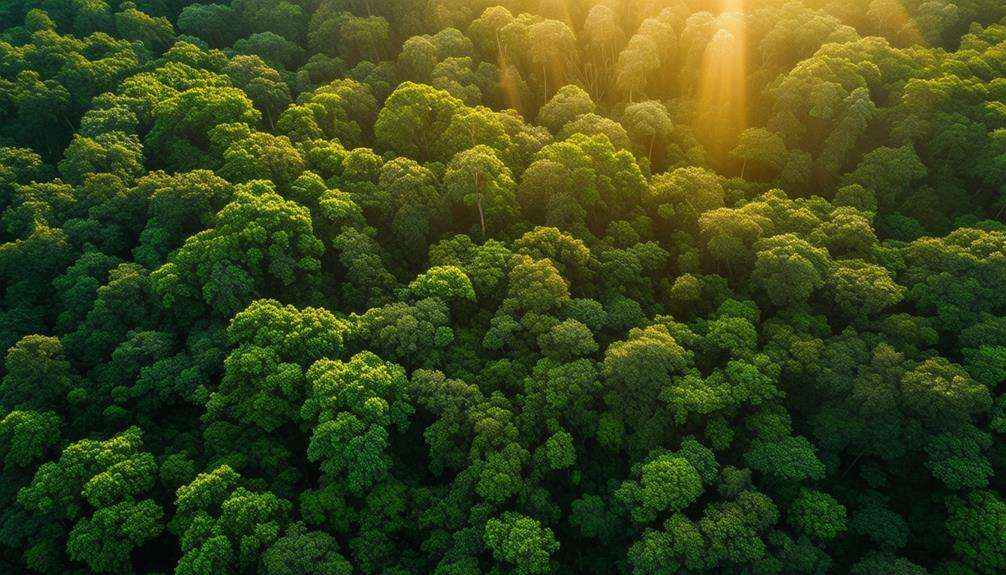
Drones equipped with high-definition cameras provide detailed insights into new sapling growth and deforested areas, making forest health monitoring indispensable. By capturing comprehensive environmental data, these drones enable conservationists to assess the effectiveness of various conservation strategies. This technology allows for the analysis of both individual trees and entire forest sections, facilitating the identification of areas requiring attention.
Drones are particularly advantageous for surveying hard-to-reach locations, ensuring that no part of the forest remains unchecked. This capability is crucial for targeted replanting efforts, as understanding the specific needs of the landscape can lead to more efficient reforestation. Additionally, seeding drones are utilized in hazardous or uncharted territories, enabling the safe and effective restoration of deforested regions.
Forest Fire Detection
In the critical moments when a forest fire ignites, real-time data from drones can be a game-changer for firefighting efforts. Drones provide live, vital data, updating authorities instantly on the fire's location and spread. This rapid data collection is essential for quick decision-making and safely evacuating civilians.
Equipped with high-resolution cameras and thermal sensors, drones offer visual data on fire direction, enhancing firefighting strategies. This information allows crews to allocate resources effectively, ensuring the safety of human lives and the environment. By monitoring inaccessible areas, drones provide critical information for containment efforts that would otherwise be challenging to obtain.
Using drones for forest fire detection greatly reduces risks to human lives. Firefighting teams can avoid direct exposure to dangerous conditions, focusing instead on strategic planning. Furthermore, drone technology aids in environmental monitoring, helping prevent the escalation of forest fires and contributing to conservation efforts.
Key benefits of using drones in forest fire detection include:
- Real-time updates: Immediate data collection and transmission to authorities.
- Enhanced safety: Reduces risks to human lives and firefighting crews.
- Access to difficult terrain: Provides crucial information from inaccessible areas.
Ocean Conservation
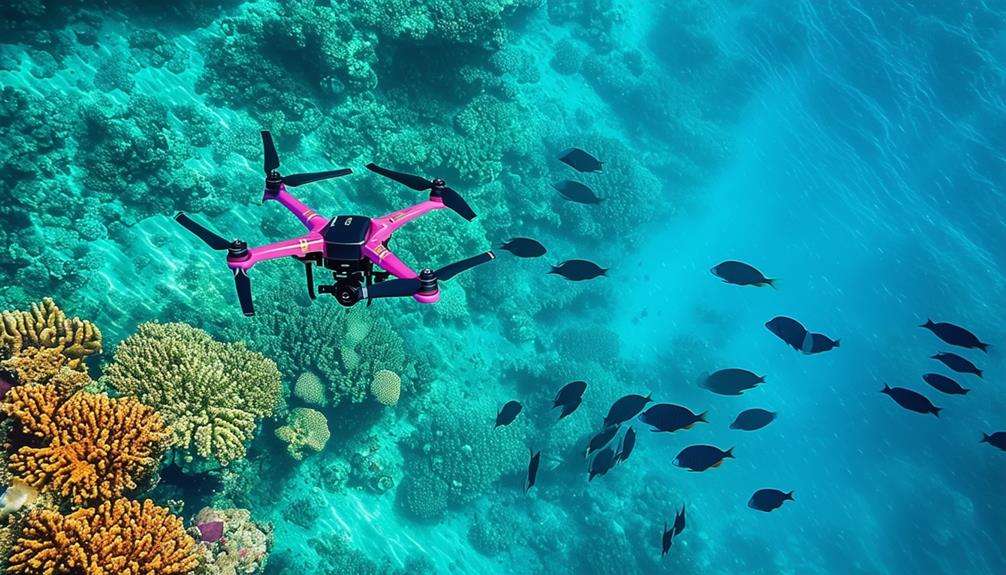
Drones play a crucial role in ocean conservation. They monitor marine wildlife and detect illegal fishing activities. These aerial tools provide a cost-effective means to enforce conservation laws and protect endangered species.
Monitoring Marine Wildlife
Leveraging drone technology significantly enhances the monitoring and protection of marine wildlife, ensuring the preservation of vital ecosystems. Drones offer unparalleled aerial views essential for effective conservation efforts, enabling the monitoring of vast ocean ecosystems, detection of habitat destruction, and assessment of human impact on marine environments. This technology provides real-time data crucial for informing anti-poaching initiatives and disaster response, thereby increasing the efficiency and impact of conservation activities.
Drones are particularly effective in tracking marine wildlife, providing a non-invasive method to study and protect endangered species. They enable detailed surveys of coastal areas, capturing high-resolution images and videos vital for research and conservation.
Specifically, drones can:
- Monitor Endangered Species: Track the movements and behaviors of marine wildlife without disturbing their natural habitats.
- Assess Habitat Health: Detect changes in coral reefs, seagrass beds, and other critical habitats to prevent or mitigate damage.
- Enhance Anti-Poaching Efforts: Swiftly identify and respond to illegal activities, protecting vulnerable species from harm.
Utilizing drones for marine conservation helps understand and mitigate the adverse effects of human activities, ensuring the long-term health and sustainability of ocean ecosystems.
Detecting Illegal Fishing
Drones are crucial in detecting and preventing illegal fishing activities, thereby safeguarding marine ecosystems. By patrolling conservation areas, drones offer a cost-effective solution for monitoring protected ocean zones. These aerial surveillance tools can spot unauthorized fishing activities that threaten marine biodiversity. Overfishing can devastate fish populations and disrupt ocean habitats, but drones provide a powerful countermeasure to these destructive practices.
Deploying drones not only helps catch illegal fishers in the act but also enforces essential conservation laws. These flying monitors can cover vast areas swiftly, capturing real-time data and high-resolution images to help authorities take immediate action. By maintaining vigilance over protected areas, drones significantly aid in the restoration of fish populations.
Furthermore, drones ensure that conservation areas remain sanctuaries for marine life, free from the harmful impacts of illegal fishing. This proactive approach supports the long-term sustainability of marine ecosystems, ensuring future generations can enjoy a healthy and diverse ocean.
Flora and Fauna Monitoring
With drones, conservationists can effectively monitor wildlife populations and their migration patterns, offering unparalleled insights into regional behavioral influences. These high-tech devices allow the collection of environmental data from dense forests and remote areas, making flora and fauna monitoring more efficient than ever before. By capturing clear aerial shots, drones help identify and protect endangered species, greatly contributing to conservation efforts.
Drones don't just provide stunning visuals; they also enable the detection of subtle physiological and behavioral changes in wildlife. This real-time monitoring helps in understanding the impact of environmental changes and human activities on different species. With aerial perspectives, large tracts of land can be surveyed quickly, ensuring comprehensive coverage.
- Enhanced Protection: Drones help counteract poaching by pinpointing illegal activities and enabling rapid response.
- Detailed Data Collection: Comprehensive data on wildlife health, behavior, and population dynamics can be gathered.
- Accessibility: Drones provide access to otherwise inaccessible areas, ensuring thorough monitoring and protection.
Ecosystem Conservation

Drones can monitor wildlife populations and assess habitat health with unprecedented accuracy. These tools enable the collection of real-time data on animal behaviors and environmental conditions, informing effective conservation strategies.
Wildlife Population Monitoring
Monitoring wildlife populations through advanced technology is revolutionizing ecosystem conservation. Drones provide a comprehensive understanding of animal behavior, migration patterns, and habitat usage. These aerial views allow data collection without disturbing the animals, making conservation efforts more efficient and accurate.
Drones significantly enhance security within wildlife areas. By tracking animals, they help deter poaching and protect endangered species, especially in remote or inaccessible locations. Drones can also quickly respond to natural disasters, providing real-time data essential for the immediate preservation and relocation of wildlife.
Consider the following benefits:
- Effective Wildlife Tracking: Drones can cover large areas quickly, offering up-to-date information on animal movements and population sizes.
- Data Collection: Aerial views from drones provide detailed insights into habitat usage, aiding in the planning and execution of better conservation strategies.
- Enhanced Security: Continuous monitoring helps prevent illegal activities like poaching, ensuring the safety of wildlife in their natural habitats.
Habitat Health Assessment
Drones equipped with high-definition cameras provide critical insights into habitat health, revolutionizing ecosystem conservation. By capturing detailed aerial views, these drones enable comprehensive habitat health assessments, revealing essential data that helps conservationists understand deforestation patterns, identify restoration areas, and monitor new sapling growth.
A significant advantage of using drones is their ability to access and survey hard-to-reach areas. Traditional methods often struggle in these regions, but drones overcome these limitations, offering a complete picture of forest health. This technology allows for targeted reforestation efforts, ensuring resources are allocated effectively to promote biodiversity.
Seeding drones play a crucial role in environmental conservation by dispersing seeds in dangerous or uncharted territories. This facilitates reforestation and helps restore ecological balance. Data gathered from drone surveys inform strategic decisions that enhance ecosystem restoration and protection.
Incorporating drones into habitat health assessments transforms ecosystem conservation. Leveraging this advanced technology provides valuable data that drives successful environmental initiatives, ultimately leading to healthier and more resilient ecosystems.
Renewable Energy Inspection
Inspecting renewable energy installations with drones ensures both safety and cost efficiency. Drone technology has revolutionized the inspection process of renewable energy infrastructure, such as solar panels and wind turbines.
By utilizing drones, it's possible to quickly and accurately monitor these sites, which provides numerous environmental benefits. Drones enhance the efficiency and sustainability of renewable energy by optimizing maintenance and identifying potential issues before they become costly problems.
Key benefits of using drones for renewable energy inspection include:
- Safety: Drones eliminate the need for manual inspections in hazardous locations, reducing the risk of accidents and ensuring worker safety.
- Cost-Efficiency: Traditional inspection methods often require significant labor and resources. Drones streamline the process, saving both time and money.
- Detailed Monitoring: Equipped with advanced sensors and cameras, drones provide high-resolution imagery and data, allowing for precise monitoring and maintenance of renewable energy infrastructure.
Wildlife Tracking
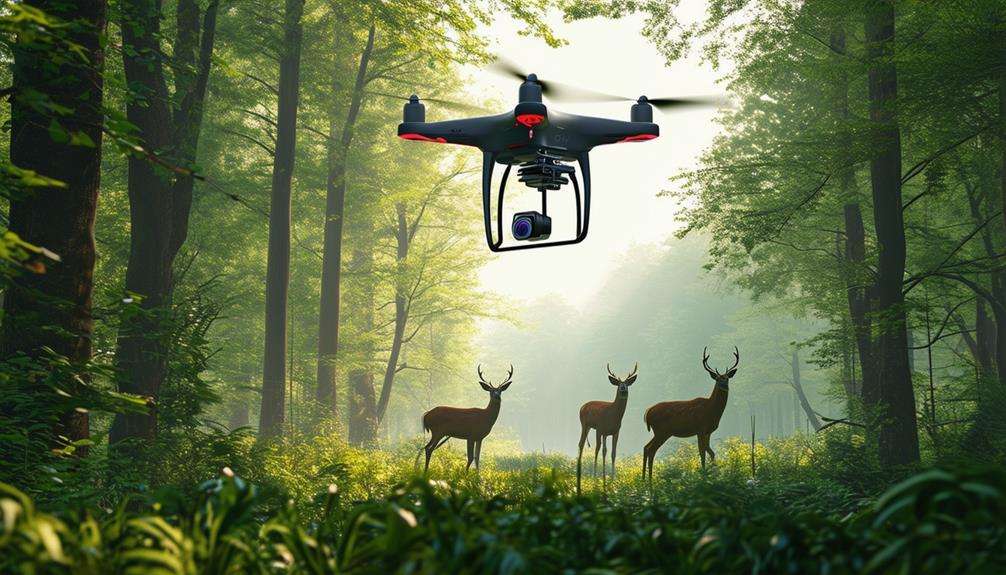
In wildlife conservation, drones play a pivotal role by tracking endangered species and combating poaching. They offer a crucial perspective to monitor wildlife behaviors and migration patterns, providing vital data for conservation efforts. By understanding these patterns, conservationists can assess the ecological impacts of various factors on wildlife, aiding in the development of more effective strategies.
Drones are particularly valuable for anti-poaching initiatives, allowing for the rapid and efficient patrol of vast areas. This reduces illegal activities without endangering human lives. The technological advantage of drones helps deter poachers, safeguarding endangered species and contributing to biodiversity preservation. With real-time aerial surveillance, conservationists can respond quickly to suspicious activities, enhancing the effectiveness of their efforts.
Additionally, drones are indispensable during natural disaster response efforts. They provide crucial aerial views for assessing and rescuing wildlife habitats affected by disasters. This capability ensures swift action to mitigate damage and support ecosystem recovery.
Remote Area Surveillance
Remote area surveillance is being revolutionized by drones, leveraging their advanced capabilities in wildlife tracking and disaster response. Equipped with high-definition cameras, drones provide essential insights into otherwise inaccessible regions. For instance, they can capture detailed aerial views of deforested areas and monitor new sapling growth, offering invaluable data for forest conservation strategies.
In the event of natural disasters, drones play a crucial role by delivering real-time aerial views that help assess damage and identify areas needing urgent assistance. Their ability to guide search and rescue operations makes these efforts faster and more efficient.
Drones also significantly contribute to wildlife conservation by:
- Monitoring Animal Movements: Track wildlife without disturbing their natural habitat.
- Deterring Poachers: Survey vast areas to detect illegal activities.
- Enhancing Security: Provide constant surveillance to ensure the safety of endangered species.
Conclusion
Drones have revolutionized environmental conservation by enhancing our ability to monitor forest health, detect fires early, and oversee oceanic conditions. They play a crucial role in tracking wildlife and inspecting renewable energy sources, helping to maintain balanced ecosystems. Their swift and safe access to remote areas makes them indispensable tools.
By leveraging drone technology, we're actively protecting biodiversity and natural resources. Adopting drone technology is a significant step towards a healthier planet. Let's continue advancing for the Earth's future.

